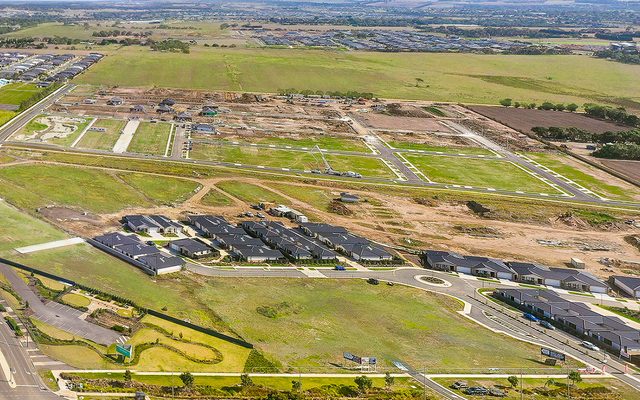This article is from the Australian Property Journal archive
AUSTRALIA needs an additional 83,000 tradies to meet the ambitious National Housing Accord target of delivering 1.2 million homes over the next five years, according to the Housing Industry Association.
The organisation’s latest HIA Trades Availability Index showed moderation to a reading of -0.49 – an improvement on the -0.58 reading in the previous quarter, and the best reading since the end of 2020, but continuing to reflect acute shortages in the industry.
It is the latest data to show that the logistics of delivering the National Housing Accord presents an uphill battle.
“I think it’s a target that we should all be working to achieve. Based on the capacity of the industry at the moment, it will be a huge stretch to be able to achieve that,” HIA executive director – future workforce, Geordan Murray told Australian Property Journal.
“We estimate that it would require around 83,000 additional trades workers just in residential to achieve that target.
“But if we’re to see housing affordability improve and to see sustained increase in the supply that meets the needs of the community, we need to be aiming to be able to achieve that level of construction that’s set in the Housing Accord.”
Data from the National Centre for Vocational Education and Research showed building and construction apprenticeship numbers have plummeted by a further 22% year-on-year. May’s federal budget included a $91 million investment to increase the building and construction workforce numbers.
Labour shortages have constrained the ability of the industry to complete the significant pipeline of work taken on during the pandemic, HIA said, which saw a peak of around 240,000 starts in a 12-month period. The slower rate at which new work is entering the pipeline has allowed the industry to work through the backlog of projects..
Despite the easing in the depth of the skills shortage, shortages remain more acute than before the pandemic. There is an ongoing constraint on home building across all regions, although there are divergences between regions. Leading indicators are already pointing to an ongoing and sustained increase in home building in Western Australia, Queensland and South Australia.
An improved availability of workers is more evident in NSW and Victoria. The HIA Trades Availability Index in the June quarter sat at -0.23 in Sydney and -0.39 in Melbourne, far more modest than in Perth (-1.10), Adelaide (-0.82) and Brisbane (-0.66).
The regional areas of NSW (-0.47), Victoria (-0.40) and Queensland (-0.34) also saw more modest shortages compared to those of South Australia (-1.02) and Western Australia (-0.81).
Ongoing cost pressures
“Given the ongoing shortage of skilled trades, it is not surprising to see ongoing cost pressures,” Murray said.
The price of skilled trades increased by 5.5% in FY24, significantly elevated from the 2.0% annual increase pre-COVID, even after having moderated from the 9.5% observed in FY22.
The extent of trade shortages varied across the various occupations. The most acute shortages of skilled labour exist for bricklaying (-0.94), ceramic tiling (-0.83), roofing (-0.66), carpentry (-0.62), and plastering (- 0.61). Meanwhile, the index of electricians increased to -0.03, indicating that supply and demand for this occupation was very close to balance.
The report noted that even as home building pipelines shrink further, there are still significant pipelines of public infrastructure, mining and other non-residential construction projects across the country that are absorbing excess labour, intercepting skilled trades that might otherwise relocate between weaker and stronger home building markets.
Murray noted that a carpenter typically has skills that are transferable across mining construction, civil construction, residential and commercial.
“There’s a high degree of transferability. So they will go to wherever the work is. That’s in contrast to something like roof tiling, which is almost done entirely in residential building.
“It varies from occupation to occupation. But, generally, if there’s a lot of construction work going on in other sectors, they will be drawing in workers out of residential.
“Where those shortages are most acute, and the competition for the labourers is most acute, that’s what’s going to be the source of delays. If we can’t access those trades, and builders aren’t able to schedule those trades for when they need them on site, that leads to delays and blowouts and additional costs.”
The Trade Price Index by trade showed bricklaying prices had lifted 4.4% in the June quarter for a 12.5% annual increase, the largest year-on-year rise among all trades.
General building (4.9%) led the quarterly growth, followed by roofing (3.4%), plumbing (3.2%) and plastering (2.8%).
Modest growth was seen in ceramic tiling, electrical, landscaping, painting and other trades.
Site preparation prices were down 2.6%, while joinery was down slightly and carpentry steady.
In annual terms, larger rises were also seen in plumbing (8.0%), other trades (7.1%), painting (7.1%) and general building (6.8%).




